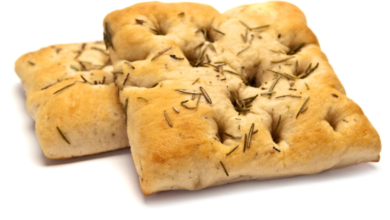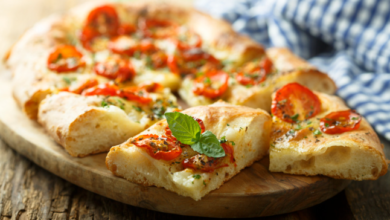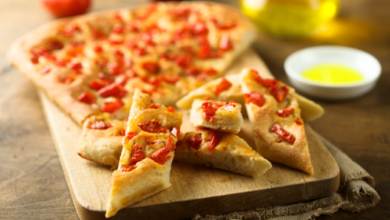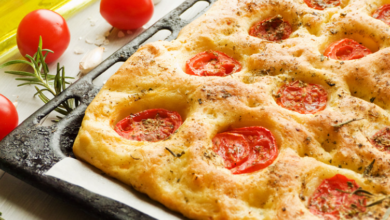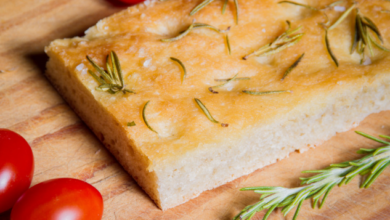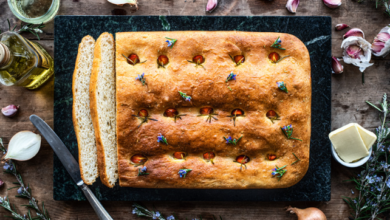Why is my focaccia not browning? Here’s your solution!

What To Know
- When steam is released into the oven, it helps to gelatinize the starches in the dough, resulting in a shiny and caramelized surface.
- A dough that is too dry will not brown properly, while a dough that is too wet may result in a soggy crust.
- Unlocking the secret to a perfectly golden-brown focaccia crust is a matter of understanding the underlying reasons for browning and implementing the appropriate solutions.
Focaccia, with its soft, pillowy interior and golden-brown exterior, is a beloved bread that tantalizes taste buds and adds warmth to any meal. However, sometimes the elusive golden crust remains frustratingly out of reach, leaving you with a pale and unappetizing loaf. If you’re wondering “why is my focaccia not browning,” this comprehensive guide will help you diagnose and resolve the issue, ensuring you achieve that perfect crust every time.
Reasons Why Your Focaccia Is Not Browning
1. Insufficient Baking Time
One of the most common reasons for a pale focaccia is simply not baking it long enough. Focaccia requires ample time in the oven to develop its characteristic crust. Ensure you follow the recipe’s baking instructions carefully and check the bread regularly towards the end of the baking time to prevent overbaking.
2. Low Oven Temperature
Similar to insufficient baking time, a low oven temperature can hinder browning. Focaccia needs a high heat to create a crispy crust. Preheat your oven to the specified temperature and ensure it maintains that temperature throughout the baking process.
3. Lack of Steam
Steam plays a crucial role in creating a golden-brown crust. When steam is released into the oven, it helps to gelatinize the starches in the dough, resulting in a shiny and caramelized surface. Try placing a small pan of water at the bottom of the oven during the baking process.
4. Too Much Oil
While olive oil is an essential ingredient in focaccia, excessive oil can prevent browning. If you notice that your focaccia is not browning despite following the recipe, consider reducing the amount of oil used.
5. Incorrect Dough Hydration
The hydration of the dough, or the ratio of water to flour, can also affect browning. A dough that is too dry will not brown properly, while a dough that is too wet may result in a soggy crust. Aim for a dough hydration of around 70-75%.
6. Stale Yeast
Yeast is a living organism that is responsible for the fermentation process in bread. If your yeast is stale or inactive, it will not produce the necessary carbon dioxide to create a light and airy focaccia. Ensure you use fresh, active yeast for optimal results.
7. Oven Calibration
It’s possible that your oven is not accurately calibrated, leading to incorrect baking temperatures. Use an oven thermometer to verify the accuracy of your oven and adjust the temperature accordingly.
Tips for Achieving a Golden-Brown Crust
- Preheat your oven to the highest temperature possible before baking.
- Place a small pan of water at the bottom of the oven to create steam.
- Use a dough scraper to gently score the surface of the focaccia before baking.
- Allow the focaccia to cool for a few minutes before slicing to prevent the crust from becoming soggy.
- Experiment with different toppings, such as herbs, salt, or cheese, to enhance the flavor and appearance of your focaccia.
In a nutshell
Unlocking the secret to a perfectly golden-brown focaccia crust is a matter of understanding the underlying reasons for browning and implementing the appropriate solutions. By following the tips outlined in this guide, you can consistently create focaccia that not only tastes delicious but also boasts a visually appealing exterior. Bake with confidence and enjoy the satisfaction of a perfectly browned focaccia that will impress your family and friends.
What You Need to Know
Q: Why does my focaccia crust turn out dry and tough?
A: Overbaking or using a dough with insufficient hydration can result in a dry and tough crust. Ensure you follow the recipe’s baking instructions carefully and aim for a dough hydration of around 70-75%.
Q: Can I use a different type of oil in my focaccia?
A: While olive oil is traditional, you can substitute it with other oils such as grapeseed oil, canola oil, or sunflower oil. However, using a different oil may slightly alter the flavor and texture of your focaccia.
Q: How do I prevent my focaccia from becoming soggy?
A: To avoid a soggy focaccia, ensure you bake it thoroughly and allow it to cool for a few minutes before slicing. Additionally, avoid storing your focaccia in an airtight container as this can trap moisture and make the crust soft.
